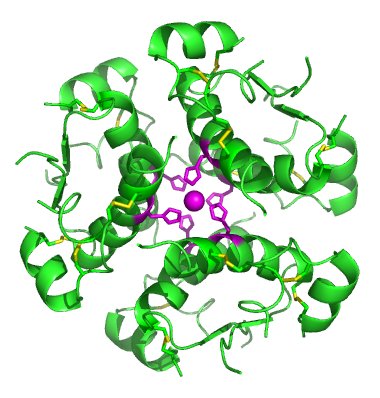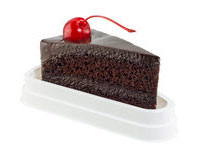- Like
- SHARE
- Digg
- Del
- Tumblr
- VKontakte
- Flattr
- Buffer
- Love This
- Save
- Odnoklassniki
- Meneame
- Blogger
- Amazon
- Yahoo Mail
- Gmail
- AOL
- Newsvine
- HackerNews
- Evernote
- MySpace
- Mail.ru
- Viadeo
- Line
- Comments
- Yummly
- SMS
- Viber
- Telegram
- JOIN
- Skype
- Facebook Messenger
- Kakao
- LiveJournal
- Yammer
- Edgar
- Fintel
- Mix
- Instapaper
- Copy Link
 Utilizing a Low Glycemic Load Diet to Your Advantage
Utilizing a Low Glycemic Load Diet to Your Advantage
People often choose the path of lowering their calorie intake drastically to lose pounds rapidly, but in the end the diet is put on hold yet again. Why are so many going through this same process only to find themselves right back where they started? The answer is not really new to the world, but unfortunately as a population we often get sidetracked by advertisements from fad diets claiming that they have found yet another method to burn fat in just one week.
Yes, calories definitely have something to do with the fat loss equation, but one of the primary things we should be focusing on is the hormones in our body. Hormones deal with the creation of skeletal muscles, energy production, fetal development, and many other processes. The bodily process we are going to focus on is fat gains, and the hormone affecting this the most is insulin.
What is Insulin?
 Insulin is an essential hormone produced by the pancreas. It is quite common to hear about it these days because of the increasing amount of diabetic patients. When you eat sugar (calories/carbohydrates/energy), regardless of its origins, your pancreas produces insulin to basically get the sugar into your cells, which at this point your cells are going to use it as a specific source of energy.
Insulin is an essential hormone produced by the pancreas. It is quite common to hear about it these days because of the increasing amount of diabetic patients. When you eat sugar (calories/carbohydrates/energy), regardless of its origins, your pancreas produces insulin to basically get the sugar into your cells, which at this point your cells are going to use it as a specific source of energy.
Insulin is essentially helping your body utilize consumed sugar as energy. Anything left over is then stored for later use. This is a pretty well maintained process that your body goes through, which could be related to the way vehicles utilize fuel. Just like a vehicle needs gasoline to get from point a to point b, we burn calories (energy) for movement and leave the rest for later use.
Your body will perform this process continuously without you needing to do anything except eat the sugar your body needs. However, your body takes a turn for the worst when sugar is consumed in large amounts over a period of time.
Insulin Resistance and Fat Gains
 Fat gains begin to occur when you have eaten too much sugar for your metabolism to handle. Fat gain therefore is for the most part a direct result of excess sugar storage. Regularly eating foods containing simple carbs and added sugar products causes your body to become disoriented within; and this especially applies to foods containing rapidly absorbent sugars.
Fat gains begin to occur when you have eaten too much sugar for your metabolism to handle. Fat gain therefore is for the most part a direct result of excess sugar storage. Regularly eating foods containing simple carbs and added sugar products causes your body to become disoriented within; and this especially applies to foods containing rapidly absorbent sugars.
Insulin resistance is when your body has become resistant to the effects of insulin, and requires more and more insulin overtime to offset the amount of sugar that has been consumed. When your blood levels contain too much insulin a tolerance is developed, your cells no longer respond to insulin, and your pancreas is now performing a vicious cycle of excessive insulin production.
Diabetes, cancer, and heart disease can become present once you reach the full stage of insulin resistance. Thankfully however, before diseases like these tend to set in most people experience fat gains. Paradoxically this excess fat is a great early warning system that a lifestyle change is needed! Fat begins to make its presence known during the early stages of pre-diabetes because of the excess sugar that has been stored overtime.
While your body is in the beginning stages of insulin resistance, your brain is telling you to consume more sugar to counter the high levels of insulin in your blood, but the thing is insulin doesn’t need this extra sugar consumption, and therefore sends it away to be stored. Your body is now fiending for sugar like an addict does for drugs, and it truly is an addiction, which is why it’s one of the most difficult things for a person to handle. This ongoing process will continue unless you do something about it – there’s still time to make changes within your diet and overall lifestyle.
Additional Reading:
Countering the Affects of Pre-Diabetes: Low Glycemic Load Diets
 Any person that has diabetes will tell you they had no idea they were even pre-diabetic to begin with. 86 million adults in the United States are pre-diabetic, and this only accounts for those surveyed and diagnosed. It’s pretty scary to think what the exact number is, but instead of fearing it we can prevent it by achieving a goal that a lot of people seek – fat loss.
Any person that has diabetes will tell you they had no idea they were even pre-diabetic to begin with. 86 million adults in the United States are pre-diabetic, and this only accounts for those surveyed and diagnosed. It’s pretty scary to think what the exact number is, but instead of fearing it we can prevent it by achieving a goal that a lot of people seek – fat loss.
When we actively seek to build lean muscle and reduce body fat, then we are already focusing on countering the affects of pre-diabetes without even making it the primary focus. The easiest and most effective diet is referred to as a low glycemic load, which is supplemented with higher protein consumption. Higher meaning slightly more to take place of most carbs, but not enough to cause kidney damage overtime.
Low glycemic load diets burn fat the fastest naturally and help keep the fat gains away. Fad diets focus on quick results in a matter of weeks, which are generally going to allow fat gains to come back much easier as a result. Low glycemic load diets basically focus on eating foods that contain less sugar. Note that some brands do attempt to make this a fad diet because of the way they seek to assist the person, but you won’t have to do any silly meal planning really – you just have to think about what you eat.
Here’s a simplified low glycemic diet for fat loss approach:
- Eat less foods containing added sugar or simple carbs (starches included)
- Eat fewer processed foods (i.e. things with preservatives found pre-packaged)
- Consume more whole foods containing protein, dietary fats, and fiber.
- Choose foods from meats, poultry, seafood, vegetables, nuts, seeds, legumes, and a limited amount from fruits and whole grains.
- Drink at least 8 glasses of water daily
- Eat breakfast daily
- Drink less fruit juice and soda
- Exercise a minimum of at least 2 hours a week with moderate intensity
Everything you read in the above list basically places you in a low glycemic load diet with fat burning potential. You don’t need any fancy Glycemic Index (GI) chart to tell you something is not good to eat. For example, simply read the ingredients label and see what the first ingredient is. Sugar, especially as the first ingredient is not ideal so these foods for obvious reasons should be eaten sparingly.
Sugar aside, what other ingredients should I watch out for? Great question because some ingredients are even worse than regular sugar and so they should just not be given the chance for consumption. You’ll find many of these ingredients in many of today’s foods. Let’s take a look and some of the common ones to avoid.
Is it “blended” hydrogenated oil? High fructose corn syrup? Trans fat? These 3 common ingredients should be avoided as much as possible, and some will soon be banned from even being used as time progresses on – partial hydrogenated oils (trans fat) already listed for this. Note that a company can claim that their product has “0 Trans Fat” if it contains 0.5 grams a serving or less up until the legal ban of it has been placed. So be cautious with your processed foods.
What About Counting Calories?

Counting calories can be used alongside the tips provided above, however, don’t drive yourself crazy counting them. Unfortunately this is the case with many who strictly utilize a calorie counting approach. They drive themselves bonkers trying to keep track of every little calorie. For starters, counting calories is not as accurate as you might think. This is even more true for the average person because of the various misconceptions they have about calories. Even the savvy dieter will have to deal with the fact that calories listed on a product are approximations, so you can’t really know with absolute certainty how many are really being consumed.
Unfortunately the biggest blunder with many people is that they often confuse calories by throwing them in the same bucket. Not all calories are equal. For example, 2,000 calories from a bottle of soda is often thought to be the same as 2,000 calories from whole foods. For some of you it may sound beyond strange that somebody would lump these two vastly different foods together, but this happens quite often and is obviously a problem for those who do so. Now even if you aren’t one of the many who look at calories this way, remember that calories are still estimations and not every calorie is equal, even when comparing items on a typical healthy food list.
Another reason why you shouldn’t focus all your attention on calorie intake is because they fluctuate with your body’s needs. Let’s take a look at an example. Say you restrict your diet to 100 calories less and increase your running distance by a mile. This allows you to burn fat, which is most likely to happen with everyone, however, after about a month or so your weight has changed due to muscle gains and fat loss, and now you have to adjust your calories again, and again, and again.
Why make it so difficult? Use the simplified low glycemic diet tips presented to you in this article alongside a less rigid counting calorie approach and you won’t have to drive yourself mad counting each and every calorie along the way. The best part? You will see fat loss results without the added stress!
The Bottom Line: Enjoy Eating. Just Don’t Indulge Excessively.
There you have it, a simple way you can eat more food and still burn fat without driving yourself crazy counting every calorie. Remember, it’s not all about calories but more so about the quality of the food you eat. Eating healthy foods that are low in sugar can do wonders for your body and help you shed excess fat in no time. You will also save yourself from potential future health issues such as diabetes.
The information provided is to give you a simplified yet effective way to shred fat while being able to consume foods that aren’t bland and or disgusting to eat. You can enjoy your life and eat while on a diet plan, but just don’t go overboard and binge on eating sugary snacks. You can lose fat this way if you have patience and determination because it is not a “get skinny quick” diet, but it does work and doesn’t affect your health.
See Also:
About Brian Pankau
After becoming a Marine, Brian realized that his career would be within the fitness industry, and has now become a personal trainer and writer pertaining to health, fitness, and nutrition. He holds multiple certifications as a personal fitness trainer, specialist in fitness nutrition, senior fitness trainer, strength and conditioning trainer. He also holds an AS in Exercise Science.

